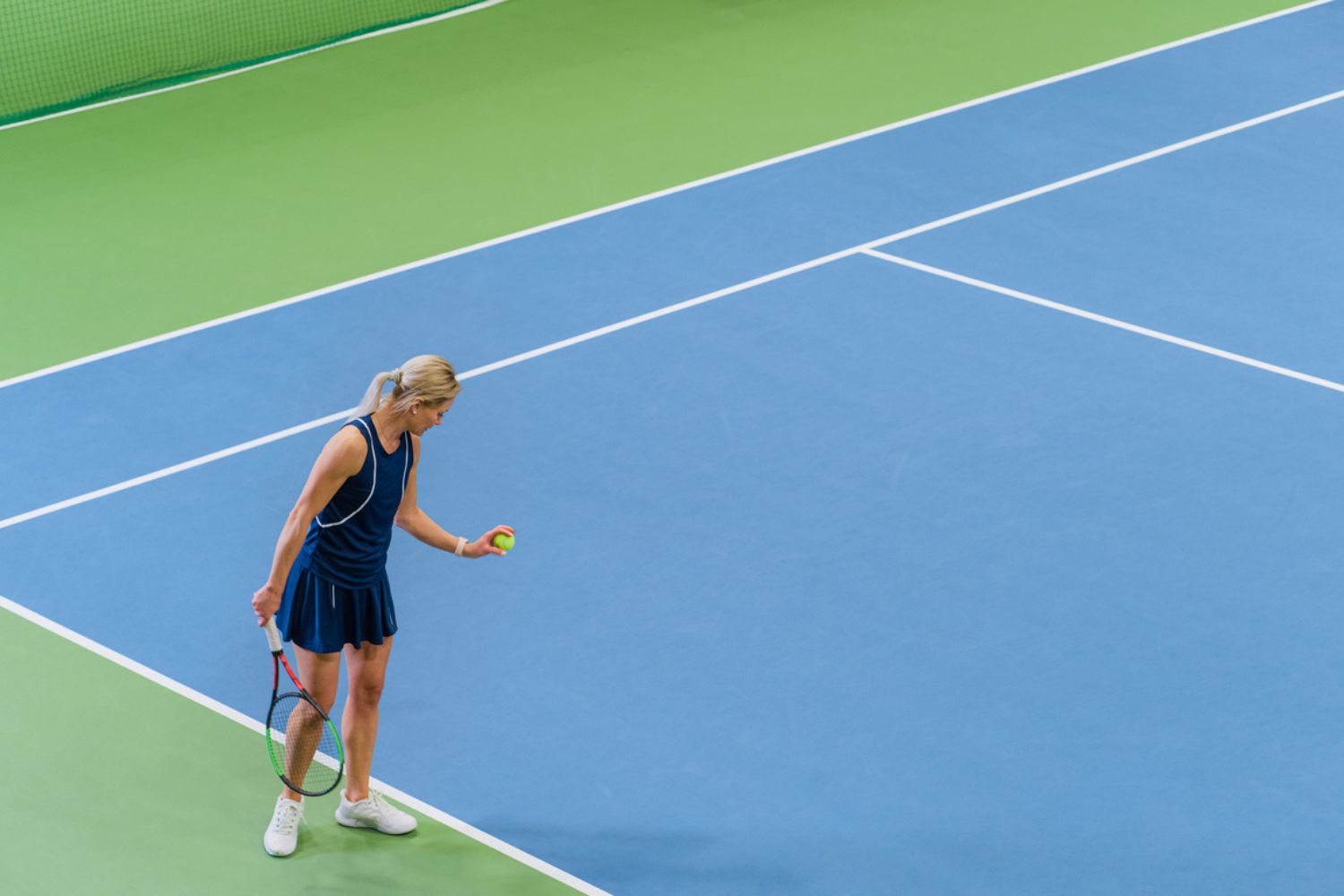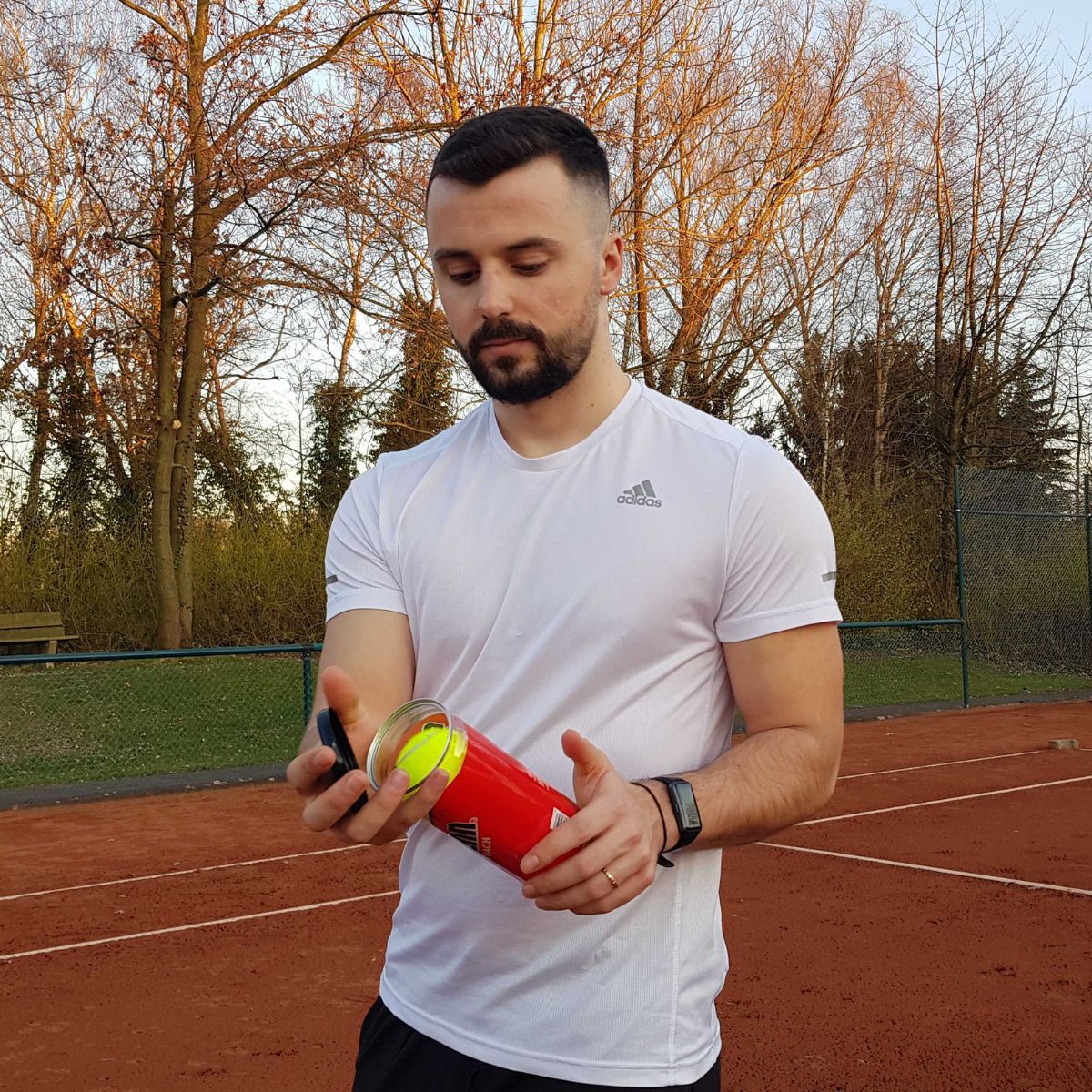There is nothing more damaging to your confidence on the court than when you miss a service before you even begin a tennis rally. It will bring you down, give your opponent some easy, precious points, and in the end, negatively affect the outcome of the game.
There might be a result of some common mistakes you are making, that’s why we came up with some simple but important tennis serve tips.
You don’t need to be perfect right away, but you need progress and constant improvement. The tennis serve actually a groundstroke and very challenging to master. It requires skills, physical strength, eye and hand coordination, and time precision. Listed below is everything you need to know to learn the tennis serve technique.
Tip 1: Grip
How you grip the tennis racket is very impactful in the accuracy of the serve, because it affects the ball’s spin and power. Most players make the common mistake of holding the racket in a forehand grip, which generates less power and spin, and it makes the swings more difficult.
The ideal grip during a serve is the continental grip, which will dramatically improve your serving technique. To properly hold the racket in a continental grip, make sure to place the index finger at the second bewel and wrap your hand around the handle, holding the racket in a straight line with your arm. This will add more power and spin, helping you deliver a perfect serve.
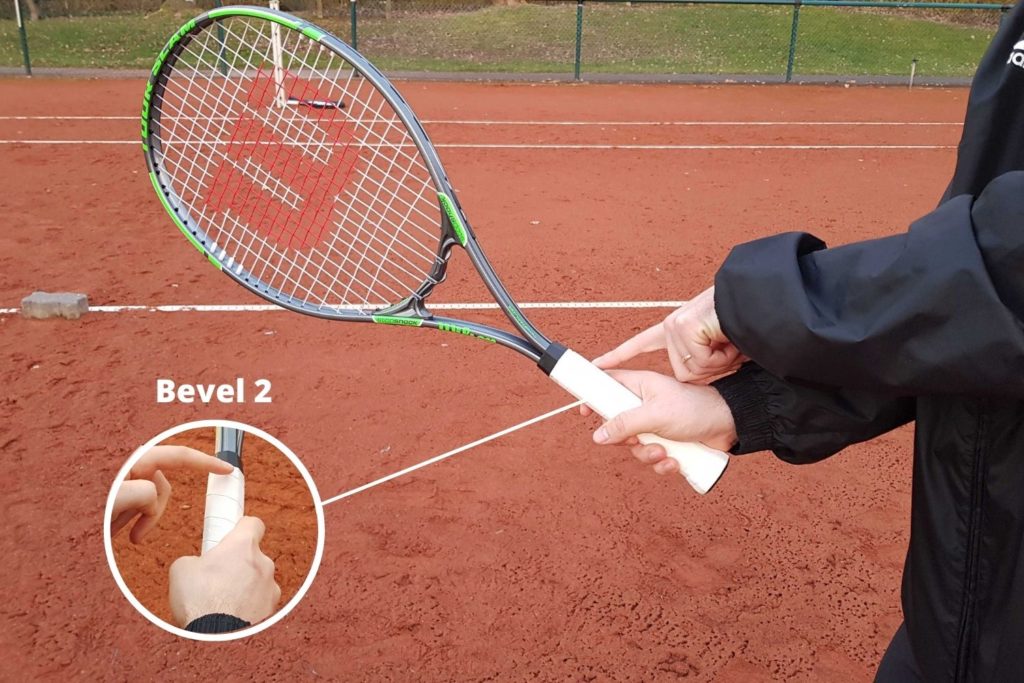
There are slight variations of the continental grip, so whatever you choose, make sure to be comfortable with it. To hit a flatter serve with more pronation, you can hold a stronger continental grip by moving your hand position slightly to the right, towards the forehand grip.
For more topspin and slices, move the hand position slightly towards the backhand side. If you are a fresh beginner, however, it’s better to stick with the traditional continental grip and give yourself enough time to master the serves.
Tip 2: Start
Keeping your feet firmly on the ground, make sure you have a solid base when you are in the starting position. Your body should be facing the side of the court’s fence while also keeping looking at the targets over your shoulder. Moving too fast is a common mistake for beginners and will mess up your game’s rhythm, pace, and timing.
This will also add more tension and stress to their arms and wrists, making the players uncomfortable, underperforming, and even prone to possible injuries.
One of the best tennis serve tips is to start out with a slow tempo during the first motions and then gradually increase the pace during swings.
The right starting position is when you keep your arms relaxed and shoulder down, becoming fully aware of your surroundings and how tightly you are holding the racket. It’s normal to feel pressured or nervous, but this is something you should deal with if you want to improve your game skills.
Try to create a pre-serving ritual that will help you calm your nerves and hit the best service possible. Bounce the ball, take some deep breaths and try to focus 100% on the game.
Tip 3: Stance
For a proper, basic stance, you should position your front foot pointing to the right net while the front foot stays parallel to the baseline. In order to remain stable during the whole serve motion, you should keep your toes aligned with the heel. It’s important to learn the proper serving technique during the beginner phase when it is easy to master.
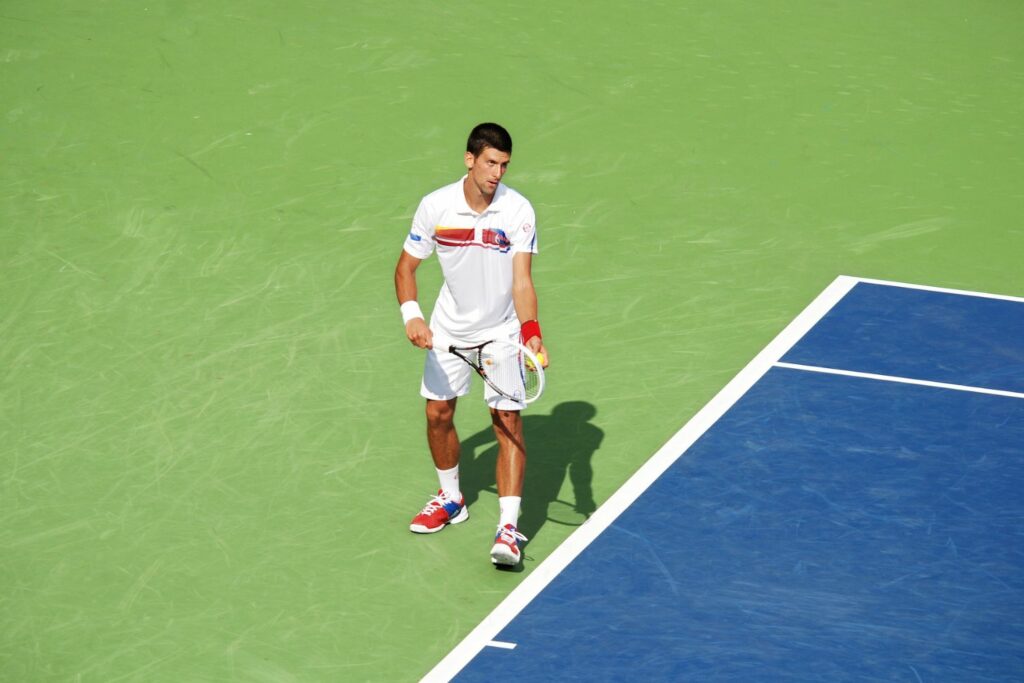
Most beginners will be taught to serve from the ad side, where the difference between ball flight and the swing path direction is less significant, making the learning process easier.
To deliver the serve, you can choose between a platform stance, where the foot remains in the same position throughout the serve, or a pinpoint serves stance where you push off towards the ball. The choice comes down to personal preferences, but whatever it is, make sure you can rely on it, and that helps you find your pace and rhythm.
A platform stance will give you the advantage of a better arm position during the serve, generating more topspin. It will also help you as a player to improve footwork, shoulder turn, and have a better contact point with the ball. That’s why many well-known players, like Federer, use a platform stance, even though the pinpoint stance certainly does have its advantage.
Tip 4: First Move
How you start the first move is probably the most important element of your serve. The incorrect form of your body will cost you a lot of energy and strength while trying hard to overcompensate. If you keep this up, performing well and winning the game will become an unattainable goal.
The right way to perform a solid first move is to turn your body slightly towards the outset, especially your shoulders.
Make sure that your toss arms move ahead while the serving arm jags or delays in movements. When you are ready to release the ball, keep the tossing arm in a straight position, raising it smoothly.
Meanwhile, during this phase, you can bend or keep the serving arm straight and move the racket in a trophy position, with the face closed. This is the best way to gather energy, which you can use when you come into contact with the ball for an explosive serve, that will keep your opponent on its toes.
Tip 5: Toss
Toss it’s an important element of the serve, even for players like Roger Federer, so you’ll better pay attention to it. There are many players that constantly complain about their toss being all over the place and making their serve more difficult and less accurate than it should be.
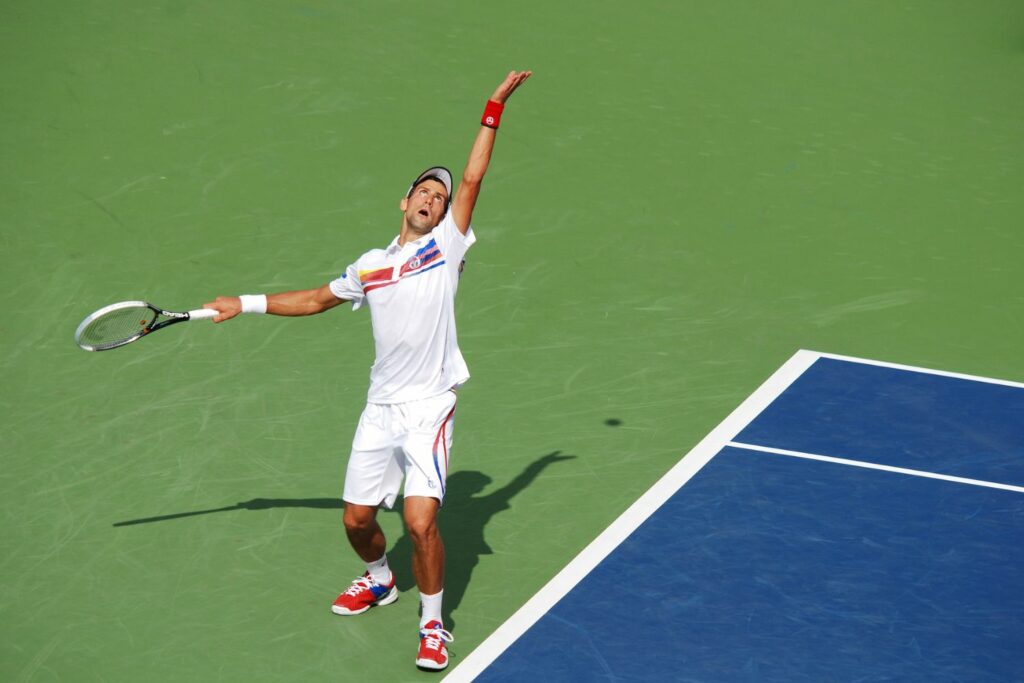
It doesn’t have to be this way; you can always develop a consistent toss by locating the ball in the best spot. To do this, keep your wrist neutral position while holding the ball with your fingertips only. You should toss the ball from the shoulders while the whole body remains still.
When serving, height and direction are extremely important; you should always remain aware of how far left or right or how far the ball goes in front of you. The same applies to the height; you need to know beforehand how low or high the serve will be. This is necessary if you want to master an excellent serve and never fail again at it.
Tip 6: The Body Position
The way you position your body is very important in the accuracy, power, and spin of your serve. Starting off with your tossing arm, try to keep it straight, although not completely locked during that first move when the racket goes in a drop position. Then right before the swing, fully extend the tossing arm towards the sky, keeping the palm of the hand facing the side fence, spreading the finger slightly apart for an explosive serve.
Getting in the trophy position is also key to a successful serve. To do that, bend your serving arm at approximately 90 degrees when your tossing arm is fully extended toward the sky. The rackets remain face closed, the shoulders are turned, and the knees slightly bent to gather momentum, which will make the serve much more powerful.
A common mistake of many players is that they come in a squatting position when bending their knees. Don’t do that; it will make the serve less efficient, while you’ll be spending way more energy than you need to.
A good bending position of the knees will release more power as you jump. If you use a platform stance, then make sure to push off the ground with both feet equally. In a pinpoint stance, push off your front leg. Then, your front hip should be towards the net to make it easier for the body to go forwards for the ball. After jumping for the serve, keep your front foot on the baseline.
Tip 7: Racket Drop and Contact Point
The racket drop will happen if you master the right grip, stance, first move, and body position. Your arms and hand should be relaxed as you are exploding upwards with your legs. Make sure to lead with your elbow when making contact with the ball.
If you do all these steps in the correct form and find your rhythm, the racket drop will be effortless, helping you generate massive power for the serve.
The first contact with the ball should be when your arm is extended towards the sky, right above your body. Generally speaking, the dominant shoulder will be the first to contact the ball during the first serve. For the second serve, you should come in contact with the ball when the ball is above your head.
Regardless of the serve type you choose to hit, the arm should always be fully extended, even though the toss and contact location might slightly change. As already mentioned, building momentum and developing the right tempo is important so that the serves will have consistency and accuracy.
The best way to do it is by going slow at first and then accelerating movements when you come into contact with the ball. This will help you have maximum impact when hitting the serve, and generate effortless power and spin. It might take some time to master all of this, but it’s all worth it.
Tip 8: Finish the Serve
Don’t underestimate this step because it will help you build momentum throughout the game. Yes, the finishing phase comes naturally after the full serve movements, but you can make sure to put some extra attention to it by getting your hands in the opposite pockets at the end of a swing.
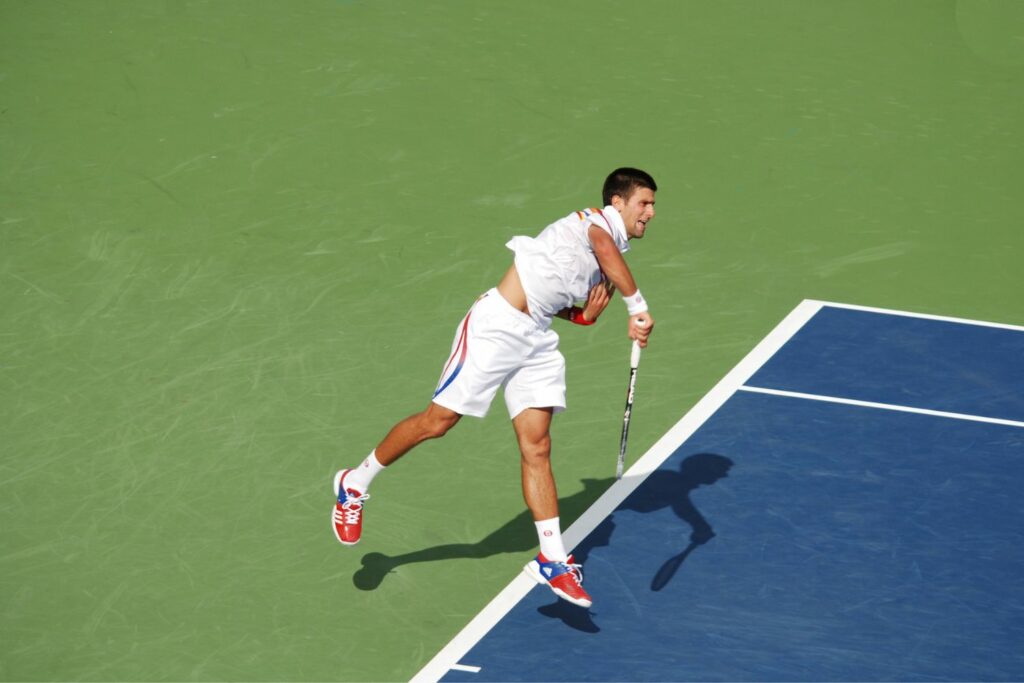
Another thing you can do is put the arms in front of the belly button at the end of the swing while keeping the arm in a bending position. At the end of the swing, you can also curl the wrist so that the palm will be facing up, helping to control the serve outcome better while adding some more spin and power.
If you are one of those players that will jump, will land inside of the baseline and jump on the court; after coming in contact with the ball, make sure that your front leg is the one to land first, then kick your back leg behind. It will help to minimize impact and achieve the perfect balance for your serve.
There are also many other players that, after hitting the serve will step onto the court because they can’t perform a jump. It’s perfectly okay; please don’t pressure yourself to do something you are not ready for yet. Whatever you do, jumping or not, it’s important to gain momentum in court, so keep your body moving for more successful serves.
Tip 9: Pronation
You don’t have to worry about pronation when you are in your beginner phase; the most important thing you need to focus on is learning the fundamental factor of the serving technique.
Suppose you manage to master the correct form of all the elements of a serve. In that case, you don’t even have to put a second thought about it because If you have the right grip, toss, technique, and position your body as you should, the pronation will come naturally and effortlessly.
Pronation is a term you’ll become familiar with when upgrading to advanced skill levels when it’s necessary to maximize power and spin. After you come into contact with the ball, the racket’s strings will turn towards the fence, which will help to increase power, and if you allow your arm to bend, you’ll add more pronation as the ball lands on the court.
The key is to keep practicing your serves and perfecting your form and techniques. If you follow these tennis serves tips and make all the adjustment needed serving will become easy for you, and soon enough, you’ll be spending more time focusing on the pronation too.
FAQs
If questions still linger about tennis serves or want a few more tips on serving in tennis, then these frequently asked questions can help to provide some additional clarity.
Q: How can I improve my tennis serve?
Improving your tennis serve requires dedication, practice, and focus. The most important thing to do is focus on the fundamentals:
Focus on form and technique: To have a consistent and powerful serve, focus on proper form and technique. Stand tall, align feet with the center line of the court, square shoulders towards the target, and use both arms overhead for an explosive movement at the moment of ball contact.
Increase serve speed: To improve serve speed, push off from both legs and rotate through hips while throwing arm up quickly during ball contact. Incorporate strength training exercises to make serving muscles stronger and faster.
Improve spin control and consistency: To master spin techniques and control trajectories, focus on follow-throughs necessary for different spins. Attend lessons or coaching clinics.
Add variety to serves: To surprise opponents, add variety to your serves. Develop different kinds of serves and switch sides of the court to add variety to your strategy.
Stay motivated and practice: Dedicate time to practicing regularly and remain motivated. Continuously work on developing skills and focus on the end goal to make progress and remain diligent.
Q: What is the key to a good tennis serve?
The key to a good tennis serve is mastering the correct technique and having proper form. Firstly, you should ensure that your grip on the racket is comfortable and secure. Common grips used for serves are continental, eastern forehand, and western forehand.
Depending on what spin you want to place on your serve will determine which grip to use; all three offer different amounts of backspin or topspin, depending on your preference.
Q; What is the easiest serve in tennis?
The easiest serve in tennis is the flat serve. It is a great option to use when you are looking to get your points started quickly, as it has less spin on the ball than other serves. The flat serve tends to be more reliable and predictable, due to its lack o
